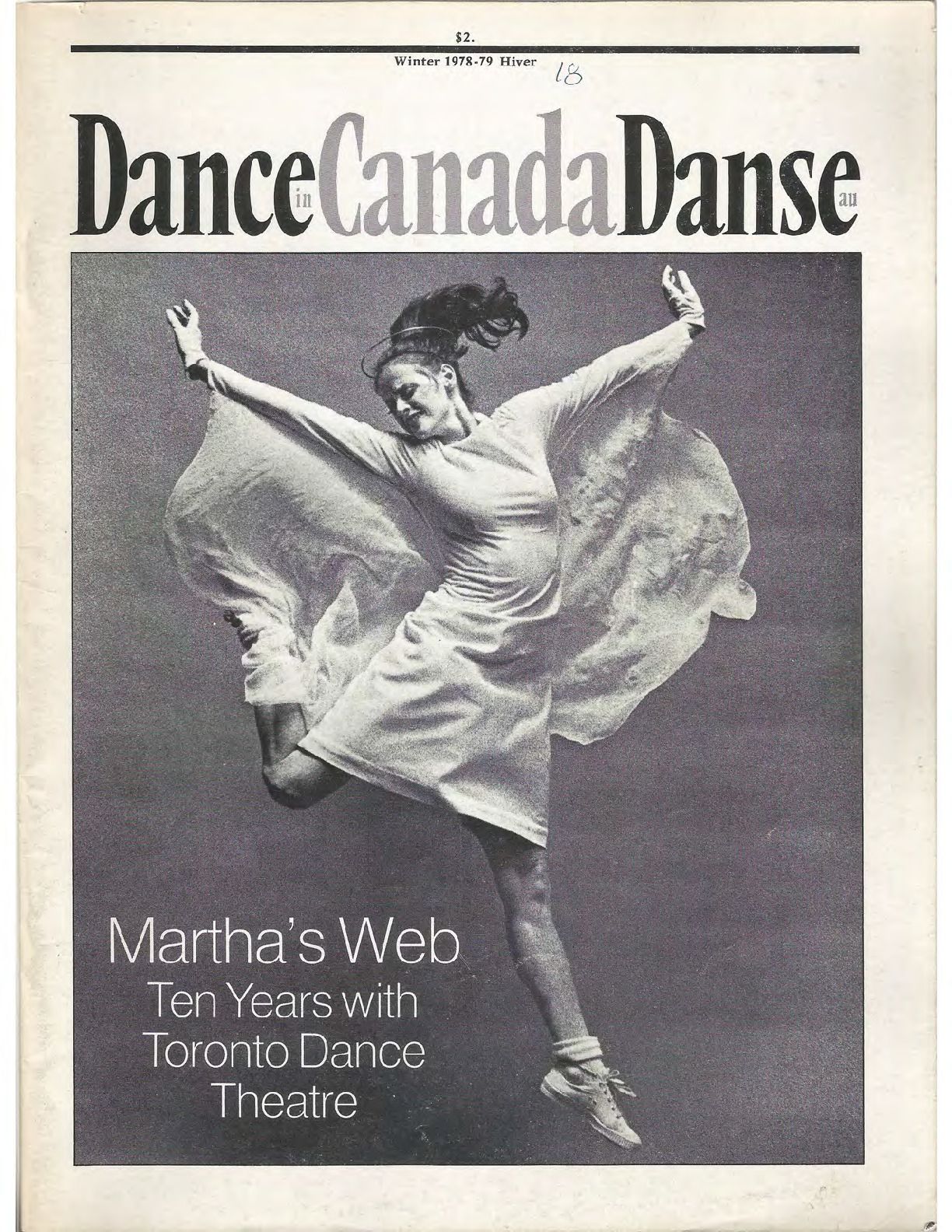Dance in Canada Magazine Number 18, Winter 1978/1979
Added 30th Apr 2021 by Beth Dobson (Archives and Programming Assistant, DCD) / Last update 9th Mar 2022
The description of this Item
Contains the following articles:
- Martha's Web: Ten Years with Toronto Dance Theatre by Graham Jackson
- A Whirler's Tale: Tournesol Among the Dervishes by Ernst and Carole Eder
- Ashton and the Canadians by David Vaughan
- Norman Campbell and La Fille
- Lost Dreams: Donald MacSween and Dance at the National Arts Centre by Hilary McLaughlin
- Training the Dancer VI: Understanding Arm Placement A Skeletal Approach by Rhonda Ryman
- Conference '78: A Sense of Direction by Kevin Singen
- In Review
- Noticeboard
- Letters to the Editor
The collections that this item appears in.
Tag descriptions added by humans
Ballet
Dance in Canada Association
David Earle
Peter Randazzo
Toronto Dance Theatre
Funding
Schools
Michael Crabb
National Ballet of Canada
Conferences
Carole Eder
Ernst Eder
Patricia Beatty
Veronica Tennant
Camerata
Pacific Ballet Theatre
Karen Kain
Timothy Porteous
Vincent Warren
Grants
Against Sleep
Study for a Song in the Distance
Dance History
Frank Augustyn
Merce Cunningham
Royal Ballet
Interpretation
Hot and Cold Heroes
Nighthawks
Alexander Grant
Lauretta Thistle
Menaka Thakkar
Susan Macpherson
Diana Brown
Elizabeth Chitty
Graham Jackson
Continuum
Rhonda Ryman
Costume
Technique
Holly Small
Amber Garden
Kinesiology
Kevin Singen
Leland Windreich
David Vaughan
The Dream
Television
Posture
Mauryne Allan
Frederick Ashton
Lyn Roewade
Ricardo Abreut
Metamorphosis
Choreographers
The Last Act
Nancy Ferguson
Rhapsody in the Late Afternoon
Spinning
Repetition
Norman Campbell
Hilary MacLaughlin
Donald MacSween
National Arts Centre
Arm Placement
Demo Model
Charles Flanders
Sitaswayamvaram
Indian Dance
Rosemary Jeanes
Javanese Dance
Sal Murgiyanto
Dance in Asia
The Children of Theatre Street
Steve Diamond
Bill Orlowski
Colin McIntyre
Bryan Gilbert
C.M. Torey
Beatrix Legras
Martha Movell
Martha Lovell
Evolutions
James Austin
Amelia Itcush
Barry Smith
Monotones II
Les Patineurs
Les Rendez-vous
The Two Pigeons
First Music
The Reprieve
Rebus
Squaregame
Summerspace
Dark of Moon
The Act
Three-Sided Room
A Walk in Time
Dance in Canada Association Service Award
Dervish
Tapes
Subscription Series
Tap Dancing
Description of the objects in this Item
01/11/1978
Magazine
Dance in Canada Magazine Number 18, Winter 1978/1979
Dance Collection Danse
DCD's accession number for this Item. It is the unique identifier.
Auto-generated content
Tag descriptions added automatically
Auto-generated identification of objects in this Item
An autogenerated description of this Item
Auto-generated number of faces in the Item

